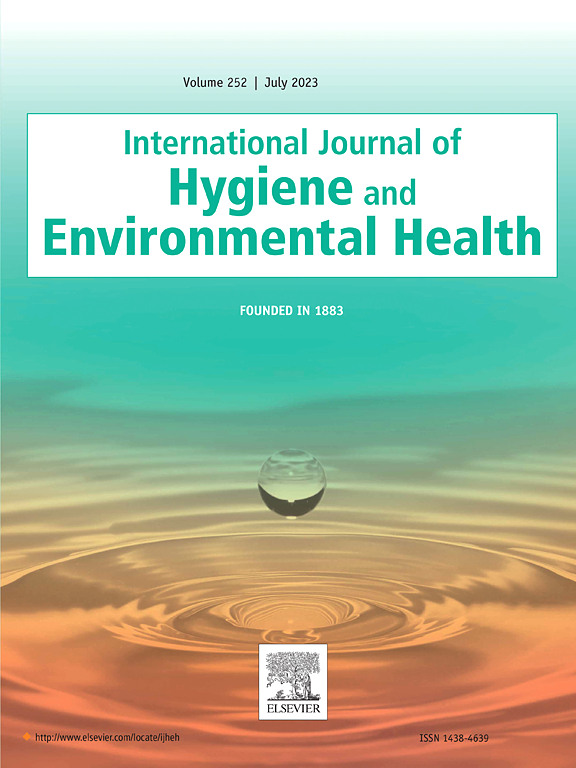Hygiene system modeling for toileting in schools
IF 4.4
2区 医学
Q1 INFECTIOUS DISEASES
International journal of hygiene and environmental health
Pub Date : 2025-09-01
DOI:10.1016/j.ijheh.2025.114667
引用次数: 0
Abstract
Background
Hygienic toileting is associated with positive health outcomes; yet efforts to provide the necessary preconditions for this behavior, namely provision of anal cleansing materials, a well-maintained toilet facility, and handwashing, are often limited—especially in schools—by a complex set of determinants and upstream factors that hinder access to the materials and behavioral drivers required for effective practice. Systems thinking, and its associated tools, is one approach to understanding and developing interventions to address the complexity of an interconnected set of factors impacting hygiene program outcomes.
Methods
This study modeled the interconnected factors influencing preconditions for hygienic toileting in schools using expert-based participatory systems modeling. Two global hygiene meetings were utilized to recruit participants for hygiene systems modeling, and to compare results across two distinct groups of model participants. Participants identified and prioritized hygiene system factors, created systems models, and performed structural analyses using influence maps and causal loop diagrams to compare key leverage points driving hygienic toileting in schools.
Results
Participants prioritized nine factors. Three of the nine factors were found to be highly influential and to drive the core system dynamics across both groups of participants: WASH leadership, governance, and partnerships; resource mobilization; and human resource capacity.
Discussion
Our study identified leverage points for system strengthening to deliver the preconditions for hygienic toileting in schools. Systems thinking should precede system strengthening to ensure the efficient and effective use of resources and to enhance the sustainability of outcomes.
学校厕所卫生系统建模
卫生的厕所与积极的健康结果相关;然而,为这种行为提供必要前提条件的努力,即提供肛门清洁材料、维护良好的厕所设施和洗手,往往受到一系列复杂的决定因素和上游因素的限制,这些因素和上游因素阻碍了获得有效实践所需的材料和行为驱动因素。系统思考及其相关工具是理解和制定干预措施以解决影响卫生规划结果的一系列相互关联的因素的复杂性的一种方法。方法采用基于专家的参与式系统建模方法,对影响学校卫生厕所先决条件的相互关联因素进行建模。利用两次全球卫生会议来招募卫生系统建模的参与者,并比较两组不同模型参与者的结果。参与者确定并优先考虑卫生系统因素,创建系统模型,并使用影响图和因果循环图进行结构分析,以比较推动学校卫生厕所的关键杠杆点。结果参与者对9个因素进行了排序。9个因素中有3个被发现具有高度影响力,并在两个参与者群体中推动核心系统动态:讲卫生运动的领导、治理和伙伴关系;资源动员;人力资源能力。我们的研究确定了加强系统的杠杆点,以提供学校卫生厕所的先决条件。系统思考应先于系统加强,以确保资源的高效和有效利用,并提高成果的可持续性。
本文章由计算机程序翻译,如有差异,请以英文原文为准。
求助全文
约1分钟内获得全文
求助全文
来源期刊
CiteScore
11.50
自引率
5.00%
发文量
151
审稿时长
22 days
期刊介绍:
The International Journal of Hygiene and Environmental Health serves as a multidisciplinary forum for original reports on exposure assessment and the reactions to and consequences of human exposure to the biological, chemical, and physical environment. Research reports, short communications, reviews, scientific comments, technical notes, and editorials will be peer-reviewed before acceptance for publication. Priority will be given to articles on epidemiological aspects of environmental toxicology, health risk assessments, susceptible (sub) populations, sanitation and clean water, human biomonitoring, environmental medicine, and public health aspects of exposure-related outcomes.

 求助内容:
求助内容: 应助结果提醒方式:
应助结果提醒方式:


